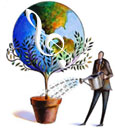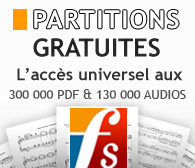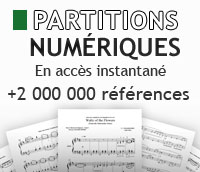Trio de cuivres (No. 2) Stefan Diehl Trio de cuivres Niveau de difficulté :
Évaluer :
|
VoirPDF : Conducteur (14 pages - 173.13 Ko)1 188x⬇ VoirPDF : Cor (F) (63.5 Ko) VoirPDF : Trompette (B) (65.55 Ko) VoirPDF : Trombone (62.04 Ko)MP3 : Audio principal (7.57 Mo)407x⬇ 4 251x
Trio de cuivres (No. 2)
MP3 (7.16 Mo) : (par Diehl, Stefan)341x⬇ 513x
Trio de cuivres (No. 2)
MP3 (8.82 Mo) : (par Diehl, Stefan)257x⬇ 445x| Compositeur |  Diehl, Stefan (1973 - ) | ||||
| Instrumentation | Trio de cuivres | ||||
| Genre | Classique moderne | ||||
| Editeur | |||||
| Date | Oct. 2014 | ||||
| Droit d'auteur | Copyright © Stefan Diehl | ||||
| Titre alternatif : | Bläsertrio (No. 2) | ||||
Ajoutée par stefan-diehl, 06 Nov 2014 Don à Diehl, Stefan Don à Diehl, StefanTrio (No. 2) for trumpet, horn (F) and trombone in 3
movements | |||||
Suggestions Boutique
Suivant
Cette partition a été téléchargée 1 188 fois depuis le 2014-11-06












